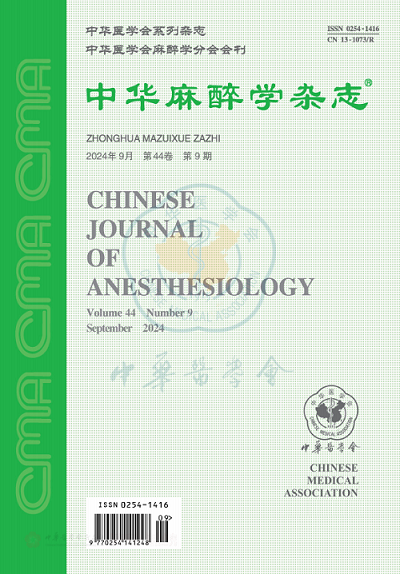Effects of different modes of anesthesia on maternal and neonatal outcomes in puerperas with placenta previa and accreta undergoing cesarean section for second birth
Q4 Medicine
引用次数: 0
Abstract
Objective To evaluate the effects of different modes of anesthesia on maternal and neonatal outcomes in puerperas with placenta previa and accreta undergoing cesarean section for second birth. Methods The trials involving puerperas with a singleton fetus, aged ≥20 yr, at ≥28 weeks of gestation, with placenta previa and accreta, undergoing caesarean section for second birth, retrospectively reviewed from January 2015 to May 2017 in our hospital, were selected.Puerperas were divided into epidural anesthesia group (group E) and general anesthesia group (group G) according to the mode of anesthesia.Maternal outcomes included incision-delivery time, operating time, postpartum hemorrhage and intraoperative hypotension, intraoperative blood loss, volume of blood transfused, volume of crystalloid solution and colloid solution infused, uterine contractions used≥2 types, implementation of surgical hemostatic measures, hysterectomy, postpartum Hb, transfer to intensive care unit after operation, and length of hospital stay.Neonatal outcomes included premature, Apgar score at 1 and 5 min after birth, transfer to pediatrics unit and perinatal death. Results A total of 269 pueroeras were enrolled in the study, and among the 269 pueroeras, there were 219 cases of elective repeat cesarean section (ERCS) and 50 cases of cesarean section after vaginal birth (CAVB). Pueroeras of ERCS: Compared with G group, the emergency rate was significantly decreased, the prenatal Hb concentration was increased, the operating time and length of hospital stay were shortened, and the intraoperative blood loss, volume of blood transfused, volume of crystalloid solution and colloid solution infused, incidence of postpartum hemorrhage, implementing rate of surgical hemostatic measures, incidence of hysterectomy, postpartum Hb, and rate of transfer to intensive care unit after operation were decreased in E group (P<0.05). Pueroeras of CAVB: Compared with G group, the incidence of postpartum hemorrhage and implementing rate of surgical hemostatic measures were significantly decreased, and the rate of Apgar score≤7 at 1 and 5 min after birth and rate of transfer to pediatrics unit were decreased in E group (P<0.05). Conclusion Compared with general anesthesia, epidural anesthesia has less effect on maternal and infant outcomes and should be preferred for this type of puerperas with placenta praevia and accreta undergoing cesarean section for second birth. Key words: Cesarean section; Anesthesia, general; Anesthesia, epidural; Placenta previa不同麻醉方式对前置胎盘和增生胎盘产妇剖宫产二胎母婴结局的影响
目的探讨不同麻醉方式对前置胎盘和植入胎盘剖宫产术后产妇及新生儿结局的影响。方法回顾性分析2015年1月至2017年5月在我院进行的单胎、年龄≥20岁、妊娠≥28周、前置胎盘和植入胎盘、剖宫产第二胎产妇的临床资料。根据麻醉方式将产妇分为硬膜外麻醉组(E组)和全麻组(G组)。产妇结局包括切口分娩时间、手术时间、产后出血和术中低血压、术中失血、输血量、输注晶体溶液和胶体溶液的量、使用≥2种类型的宫缩、实施手术止血措施、子宫切除术、产后Hb、术后转入重症监护室,以及住院时间。新生儿结局包括早产、出生后1分钟和5分钟的Apgar评分、转入儿科和围产期死亡。结果本研究共纳入269例产妇,其中择期重复剖宫产219例,阴道分娩后剖宫产50例。ERCS患者:与G组相比,急诊率显著降低,产前Hb浓度升高,手术时间和住院时间缩短,术中出血量、输血量、晶体溶液和胶体溶液输注量、产后出血发生率、,E组手术止血措施的实施率、子宫切除术的发生率、产后Hb、术后转入重症监护室的比率均有所降低(P<0.05),结论与全麻相比,硬膜外麻醉对母婴结局的影响较小,对这类前置胎盘及植入物剖宫产术后第二胎的产妇应首选硬膜外麻醉。关键词:剖宫产;全身麻醉;麻醉,硬膜外;前置胎盘
本文章由计算机程序翻译,如有差异,请以英文原文为准。
求助全文
约1分钟内获得全文
求助全文

 求助内容:
求助内容: 应助结果提醒方式:
应助结果提醒方式:


